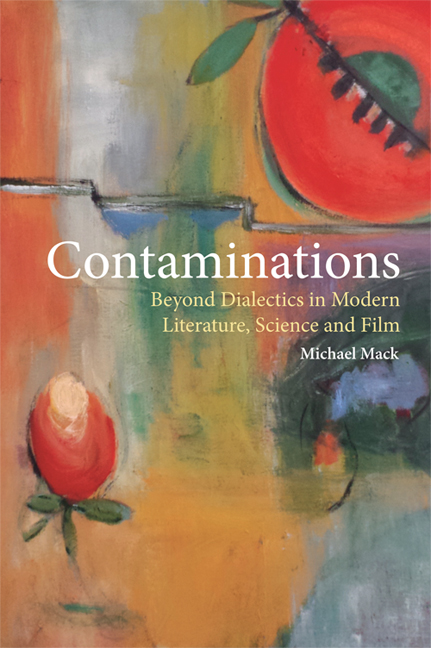Book contents
- Frontmatter
- Contents
- Acknowledgements
- Dedication
- Introduction: Climate Change and the Contamination of the Anthropocene
- 1 Contaminating Psychology with Biology: Descartes, Spinoza, Freud and Žižek
- 2 Contaminating the Visible with the Invisible: From Einstein via H. G. Wells to Hannah Arendt, Luhmann and Derrida
- 3 Contamination of Nature with Society: The Collapse of Natural Order from Melville to Wells and Ellison
- 4 Contaminating Judgement with its Suspension: Guilt and Punishment in Walter Benjamin, Herman Melville and Henry James
- 5 Contaminating the Digital: Action and Perception in Henry James and Alfred Hitchcock
- 6 Contaminating the Sacred with the Profane: Pier Paolo Pasolini and Biopolitics
- 7 Contaminating Posthumanism
- Bibliography
- Index
6 - Contaminating the Sacred with the Profane: Pier Paolo Pasolini and Biopolitics
Published online by Cambridge University Press: 05 August 2016
- Frontmatter
- Contents
- Acknowledgements
- Dedication
- Introduction: Climate Change and the Contamination of the Anthropocene
- 1 Contaminating Psychology with Biology: Descartes, Spinoza, Freud and Žižek
- 2 Contaminating the Visible with the Invisible: From Einstein via H. G. Wells to Hannah Arendt, Luhmann and Derrida
- 3 Contamination of Nature with Society: The Collapse of Natural Order from Melville to Wells and Ellison
- 4 Contaminating Judgement with its Suspension: Guilt and Punishment in Walter Benjamin, Herman Melville and Henry James
- 5 Contaminating the Digital: Action and Perception in Henry James and Alfred Hitchcock
- 6 Contaminating the Sacred with the Profane: Pier Paolo Pasolini and Biopolitics
- 7 Contaminating Posthumanism
- Bibliography
- Index
Summary
Introducing Pasolini and his Hollywood legacy, or the contamination of the mental with the corporeal: Deleuze, Hitchcock, Scorsese
According to Deleuze, Pasolini fully realised Hitchcock's mental image. Here the mind disrupts the distortions (or fictions) governing various forms of representations we confront in everyday life – an important theme in James's novels and in Hitchcock's films, as discussed in the previous chapter. There is no doubt that Pasolini's films have a strong mental or philosophical bent. According to the film director (and former assistant of Pasolini) Bernardo Bertolucci, Pasolini's cinematic style ‘can be defined as Romanesque’ (Bertolucci 2000: 7): ‘His tracking fronts resemble the first tracking shots in the history of cinema. His close-ups resemble the invention of the close-ups’ (Bertolucci 2000: 7). Bertolucci distinguishes his own cinematic style from that of Pasolini as follows: ‘My style is more impressionistic. I approach things much more gently and don't see them from an entirely frontal position’ (Bertolucci 2000: 7). It may be reductive to characterise Pasolini's style of shooting as ‘from an entirely frontal position’, as Bertolucci seems to be saying here. However frontal shots are characteristic of Pasolini's films. Similarly to film critics such as Naomi Green and Pascal Bonitzer (see Jacobs 2011: 88–121), Bertolucci argues that Pasolini's style is Romanesque or frontal.
However, in his cinematic as well as in his literary work there is also a strong sense of lived embodiment that sits side by side with what Deleuze calls the ‘mental image’. Pasolini does not dialectically switch back and forth between the corporeal and the cerebral. Rather, he contaminates the mental sense as conveyed by his close-ups with the bare life of embodied existence. The two entities are not separated in different realms from which they traverse dialectically from one place to another but they simultaneously co-inhabit each other.
- Type
- Chapter
- Information
- ContaminationsBeyond Dialectics in Modern Literature, Science and Film, pp. 159 - 190Publisher: Edinburgh University PressPrint publication year: 2016



